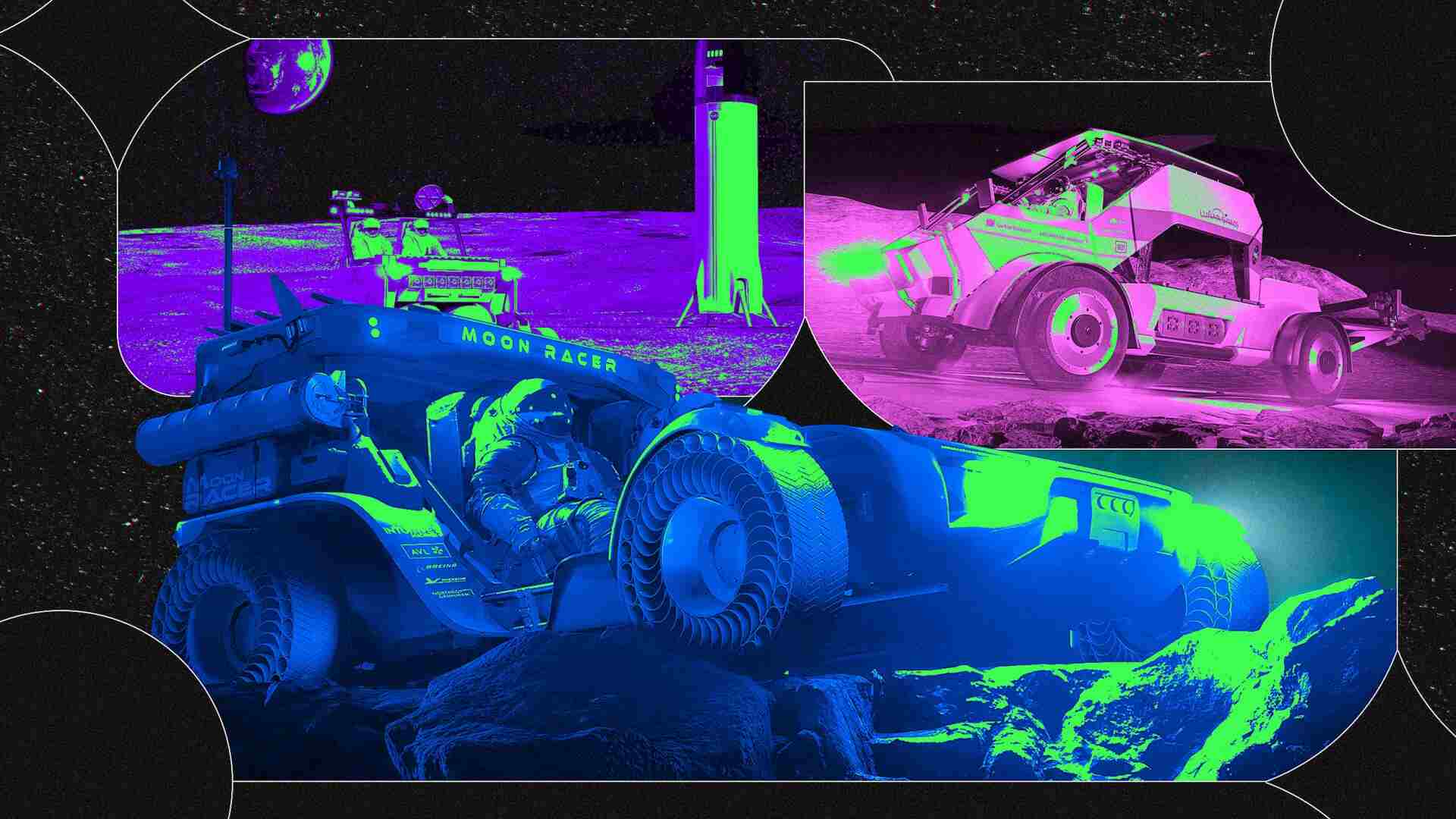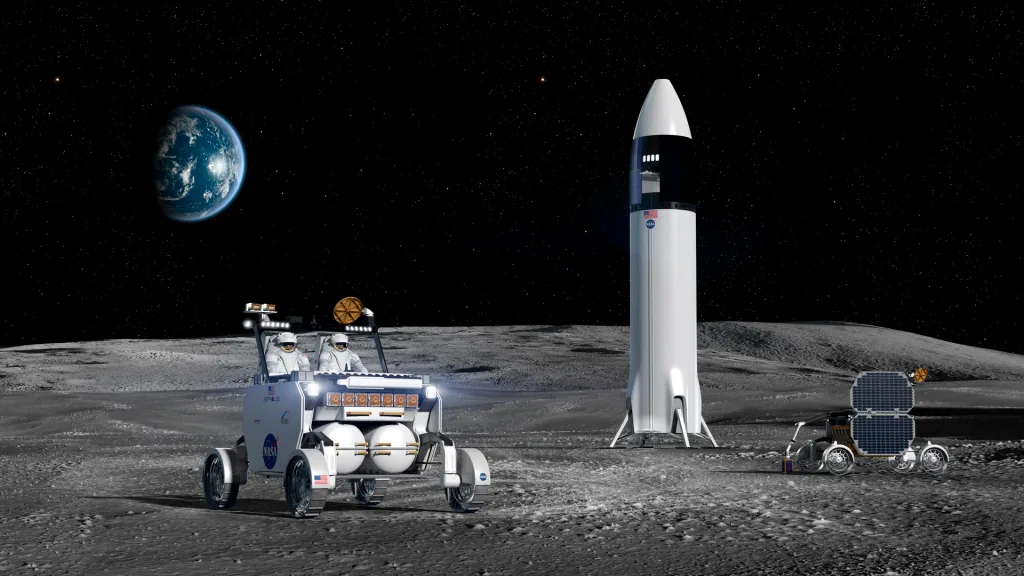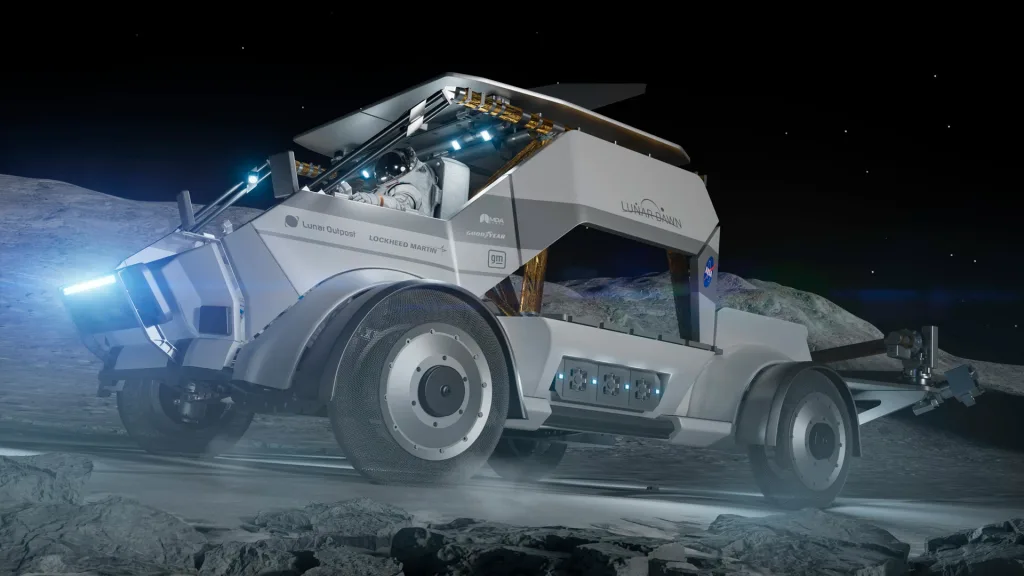- | 8:00 am
See the lunar vehicles that could someday drive on the moon
NASA is testing three designs for its Artemis mission.

The last time NASA landed Americans on the moon was 1972—they drove the Lunar Roving Vehicle, an electric-powered “moon buggy” that looked like lawn chairs strapped to a car chassis. When astronauts next touch down on the lunar surface as part of NASA’s Artemis mission, they’ll drive a vehicle so futuristic it will make the Lunar Roving Vehicle look like the original Benz Patent-Motor Car.
NASA has announced three finalists that could make the next generation of its lunar terrain vehicle—Intuitive Machines, Lunar Outpost, and Venturi Astrolab. Each has presented a concept for their design, and they look out of this world.

Intuitive Machines’ Moon RACER (for Reusable Autonomous Crewed Exploration Rover) seems as suited for exploring the lunar surface as it does racing over sand dunes. Lunar Outpost touts the flight deck-forward design of its beefy Lunar Dawn LTV as a selling point; while Venturi Astrolab designed its FLEX rover with storage containers for collecting lunar samples.
NASA astronauts will use the vehicle “to travel to locations we might not otherwise be able to reach on foot, increasing our ability to explore and make new scientific discoveries,” says Jacob Bleacher, NASA’s chief exploration scientist at the agency’s Exploration Systems Development Mission Directorate.

The finalists all had to meet a demanding request for their proposal to make it this far. Their vehicles needed to include such features as remote operability and the ability to endure extreme temperatures, given where it would be operating. (In the lunar South Pole, temperatures can reach 130 degrees Fahrenheit in full sunlight and minus-334 degrees Fahrenheit in cratered areas that are permanently shadowed.)

NASA says the vehicle is expected to land on the moon before the astronauts and will be used for uncrewed and commercial activities between missions. “With the Artemis crewed missions, and during remote operations when there is not a crew on the surface, we are enabling science and discovery on the Moon year-round,” Bleacher says.
The three companies’ designs must now undergo a yearlong study to meet NASA requirements for the vehicle, which the agency says could be in use for up to a decade.





































